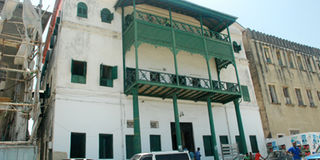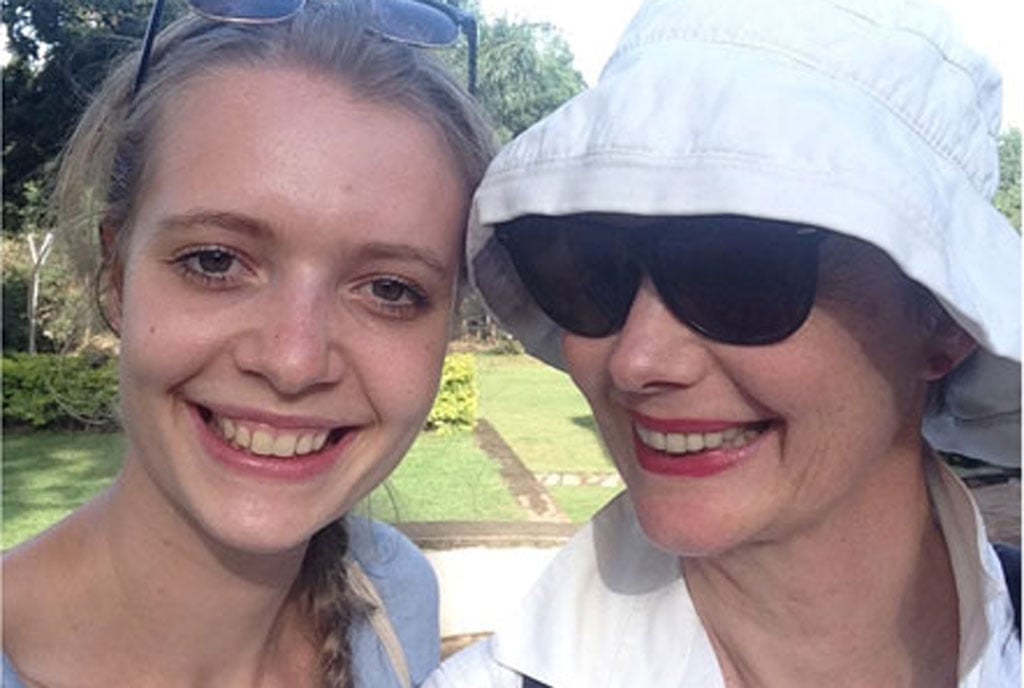Prime
Zanzibar, keeping the old in place

One of the old historical buildings in Zanzibar. PHOTO BY EDGRA R.BATTE
Zanzibar allows you to fall in love with it for different reasons. If it’s not for its spicy cuisines, it will be the people, preserved colonial architecture, nightlife or cultural and historical explorations.
What perhaps stands out most is the old architecture, which gives you the feeling that you’re living and walking through this big colonial museum. Buildings fit to be condemned houses are the commonest in Stone Town and despite their dilapidated nature not much will be done for the administration of this coastal town upholds as it is a UNESCO world heritage site.
It is just a few hotels, residential houses and rising new structures that attempt to give a new look to parts of Zanzibar. Otherwise you wouldn’t wish to be caught trying to add a brick or repaint your house or hotel without explicit permission from the tourism ministry.
Stone town, like Zanzibar is aptly christened tells of architectural styles it adopted through its colonial era so there is heavy Arabic, Portuguese and an Indian influence in the brick-wall frames. The flat-topped housing tells of the Indian legacy while Arabic and Portuguese designs stand out on the doors and window frames. These are culturally portrayed through designs of brass studs ornamentals plus carved out scripts of the Holy Quran. In fact these designs and door sizes signified wealth and status among traditional homes.
The Arabic building that I visit is one of Sultan of Oman Seyyid Said’s daughters. It’s been turned into a hotel. It’s of white washed walls, flat terraces and small windows, which I am told were shaped like that in order to preserve the modesty of women.
Arab influence was deepest and as I learn from locals, Arab and Islamic culture dictated that women were not to be over exposed in public and were confined indoors. However times have changed though Arabic and Islamic influences are still strong with an estimated 95 percent of this coastal Island’s locals being Muslim by religion. So it’s common to see women and girls covered in veils.
But the young and hip girls play along to trends of the time and with a keen eye, you’ll realise that most dress in Islamic hijab but with tight jeans and modern tops underneath.In fact you’ll be surprised at twilight. All they do is remove the hijab. And with the tourists large inflow the moral decline is visible.
Sauti za Busara music festival in February is one of those events during the year that witness the largest tourist outpour and at the concerts that surprisingly attract a bigger white crowd than locals, it is common to see white lads with local girls dressed in mini skirts and jeans.
There are a few white couples but the beach boys are not left out and find themselves company with the white girls and grannies. In fact the tourists’ inflow is a worry for moralists but anticipated by the locals. Mercury’s restaurant is one stop where you’ll get a white crowd of tourists and it is a target by the high-end and trendy girls who have their eyes on the tourists’ wallets in exchange for pleasure. Having grown up as a fan of Freddie Mercury, of that famous band called Queen, I am excited to learn the star of Too much love will kill you, was actually born here.
So on one of the evenings I chose to grab a cold one at this bar/restaurant where T-shirts of this flamboyant singer and much of his legacy is‘planted’ on the walls, both in text and in photography.
Two girls immediately spot my friend and I and the winking game begins. They come over to our table and initiate a conversation in English. We play along but show no interest of getting further than buying them beer and the chit chat so we are soon abandoned and their next ‘victim’ is a white guy seated alone on a table in a dimly lit corner. From his sheepish smile he is easy prey and soon lets one of the girl lean on his chest while the other seductively leads him on. This, as jazzy sounds play on.
That’s the shy face of Zanzibar during the day when all tourists do is journey throughout this spice island that’s also home of the former Slave Market where millions of Zanzibar’s ancestors and other Africans were sold and bought. They waited here sometimes for weeks and months for dhows to be exiled in the west.
From the history lectures, many slaves didn’t make it to this point, as they died en route. At these grounds of human misery, untold suffering, degradation and history is the Anglican Church that was built by missionary Rt. Rev Edward Steere, a Colonial Bishop. It is here that you’ll also find the Zanzibar Mbweni Ruins, which, in the slave era, housed the school for freed slave girls.
At Slave Market much of the architectural regalia still stands from concrete mouldings of slaves in chains, crying for freedom, to the dark corridors that lead to the slaves’ cave. It is cool down there and a relief from the high temperatures in Stone Town during the first half of the year, when the heat is far from bearable.
A swim at any time of the day is comforting from the coastal heat but if you don’t mind having fun while you do it then join the beach boys at the banks of the Indian Ocean who dive for show-off. If you would prefer to go to Zanzibar when its cooler, try June through to October when temperatures are four degrees less, at 26 Celsius. Otherwise December to March degrees will shoot to over 30 degrees Celsius.
This is also the fisherman’s paradise and for the real experience you would rather book a date with the local fishermen in the dhows or ngalawa canoes and go fish for the different tribes and kinds of fish that are served as the most popular dish of coastal Stone Town.Zanzibar was christened Spice Island in the 17th century.
It’s still is. Snacks and cuisines come spiced, from coconut, cloves, ginger, cardamom, cinnamon, vanilla, name it. There are tours of spice farms where much of the work is still not mechanised and is done by hand for picking, harvesting, drying and sorting.
While in Zanzibar you can only wish for more time, otherwise there’s always something new to try out- a place to visit, an interesting culture to explore but one thing that’s in your face is this big museum that’s not about to be modified because locals and tourists like it this way.
That’s Zanzibar.




